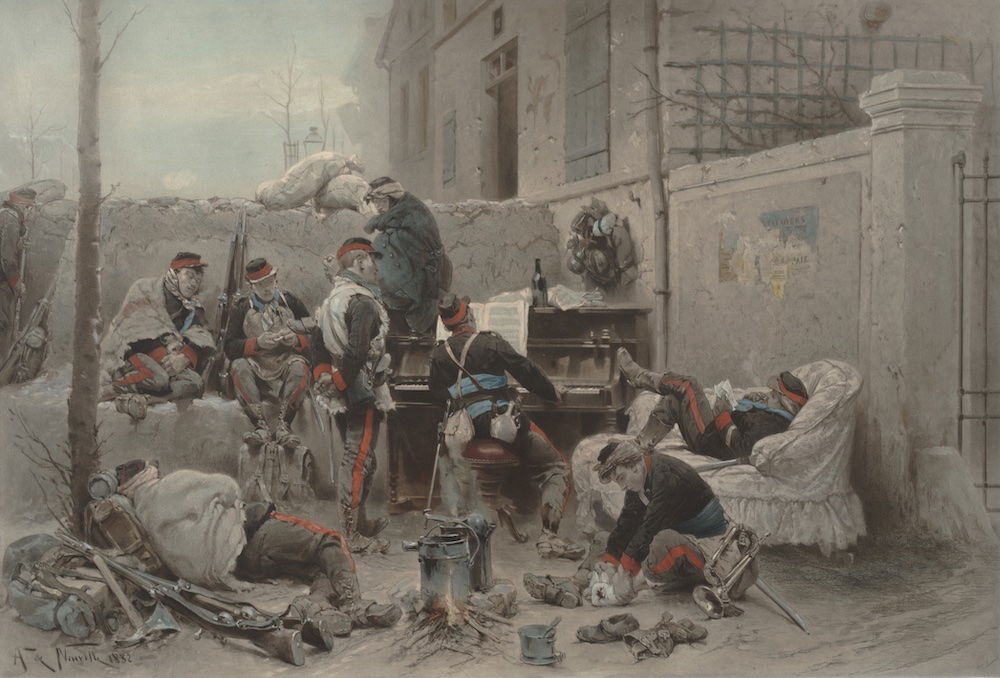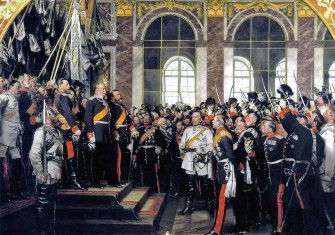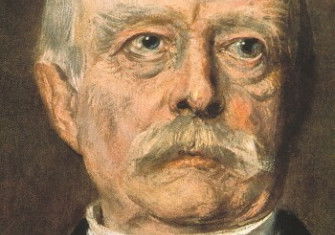Bismarck’s War by Rachel Chrastil review
Bismarck’s War: The Franco-Prussian War and the Making of Modern Europe by Rachel Chrastil argues that German victory was a catastrophe for Germany and the world.

During August and September 1870, the besieged French city of Strasbourg was subjected to more than 44 nights of Prussian shelling, during which its inhabitants were fired at approximately every 20 seconds. Many French people believed that such action contravened international agreements on the conduct of war, but in reality the new laws provided no protection for civilians. The often shocking disparity between how the Franco-Prussian War was waged and how combatants and observers thought it should be conducted exposes a contradiction at the heart of a conflict that was at once traditional and modern.
Major new books on the Franco-Prussian War are rare, especially in English. Rachel Chrastil’s Bismarck’s War will therefore inevitably be compared to Michael Howard’s classic study (1961). Nevertheless, the distinctive style and approach of Chrastil’s book are evident in her assertion that: ‘Mobilisation is an immense logistical challenge, a public relations game, and a feat of emotional management.’ While Bismarck’s War does not shy away from engaging in military analysis, the human dimension is centre stage.
Although it was Napoleon III’s Second Empire that declared war in July 1870, ostensibly on grounds of Prussian provocation, French forces were significantly less well prepared than their Prussian counterparts. French military planning failed to distinguish between mobilisation and concentration, Chrastil explains, causing significant logistical problems from the outset. Late changes to army structure, the mobilisation of inadequately trained national guardsmen, and shortages of horses hindered French ability to take the offensive in the crucial early days of fighting. Prussian mobilisation yielded a force that outnumbered and soon outclassed the French. By early August, German forces had taken the offensive into French territory. Prussian field marshal Helmut Moltke’s aspirations for a quick victory before France had time to gather international allies seemed probable.
Already, however, victory celebrations back home were fuelling a growing German nationalism even in the more recalcitrant southern states. What had started as a conflict between rulers was turning into a war between nations. By early September 1870, German victory was in no doubt. The disastrous Battle of Sedan brought the surrender of Napoleon III but not an end to the war. Bismarck rejected calls for peace without annexations from the new republican government formed in Paris, insisting that the bellicose French people remained a threat to German security.
The Franco-Prussian War was the first major European war where both belligerents were signatories to the 1864 Geneva Convention and at which the international Red Cross were present. Chrastil devotes significant attention to the atrocities committed against civilians, how they were perceived and the international response. In Bazeilles, civilians were burned alive as their homes were set on fire by Bavarian forces. The Germans in turn accused the French of violating the laws of war and engaging in dishonourable conduct. French use of colonial soldiers caused particular controversy. Wild rumours of African combatants disfiguring dead bodies became common currency among German forces.
By October 1870, 20 French departments were under German occupation. By 19 September 1870, Paris was surrounded and held under siege. Some 400,000 French forces confronted 236,000 Germans who were spread thinly across the city’s 50-mile perimeter. French military inaction led to growing unrest, with national guardsmen accusing their commanders and government of defeatism. Moltke’s hopes that Paris would quickly surrender as it ran out of food proved futile. Bismarck eventually won the argument for bombardment to force the French government to surrender. The decision proved hugely contentious in Europe, even though the 100 people who were killed in the bombardment were dwarfed by the 3,000 4,000 weekly deaths from cold and hunger by January 1871.
Chrastil argues that when the French finally surrendered in January 1871, they were treated with restraint. The Treaty of Frankfurt was less severe than the terms Napoleon Bonaparte had imposed on the Prussians in the 1807 Treaty of Tilsit. Although the French were compelled to pay the Germans 500 million francs per month, Chrastil points to how Germany refrained from engaging in ethnic cleansing in the territories it annexed from France. While Chrastil acknowledges that developments in communications meant that the war reached an unprecedented international audience, Bismarck’s War is very much a Franco-German account. The individuals whose stories do much to enrich the narrative bring nuance and, at times, pathos. We are told, for instance, that the war made Dietrich von Lassberg, a young Bavarian officer, both a hero and a villain, an outsider and a building block of the German nation.
The book concludes that the Germans won because they were more effectively organised, better trained and mobilised more men than the French. The army of the Second Empire fought well but was exhausted and hindered by the incompetence of Napoleon III. After the war, other European states sought to replicate Prussian success by expanding military conscription, developing a general staff and introducing professional military education. They placed higher value on the importance of logistics, especially railways, as well as improved communications and medical care for soldiers. The Germans drew different lessons. Believing that unification had come about as a result of military competence, they mapped the future of the German Empire in terms of military power. Thus, Chrastil concludes, German victory in 1871 became catastrophic not just for Germany but ultimately for the rest of the world.
Bismarck’s War: The Franco-Prussian War and the Making of Modern Europe
Rachel Chrastil
Allen Lane, 484pp, £30
Buy from bookshop.org (affiliate link)
Karine Varley is Lecturer in French History at the University of Strathclyde.






